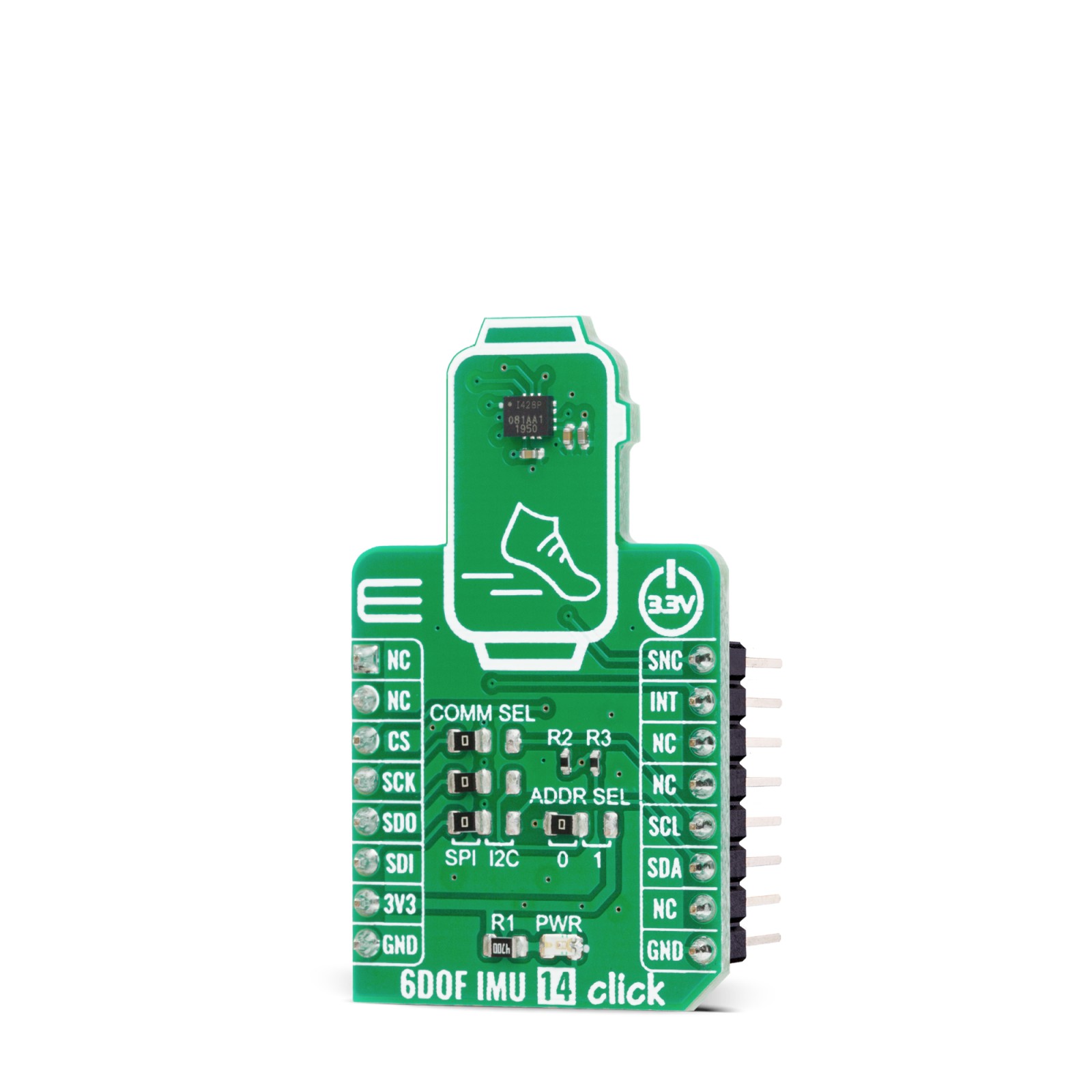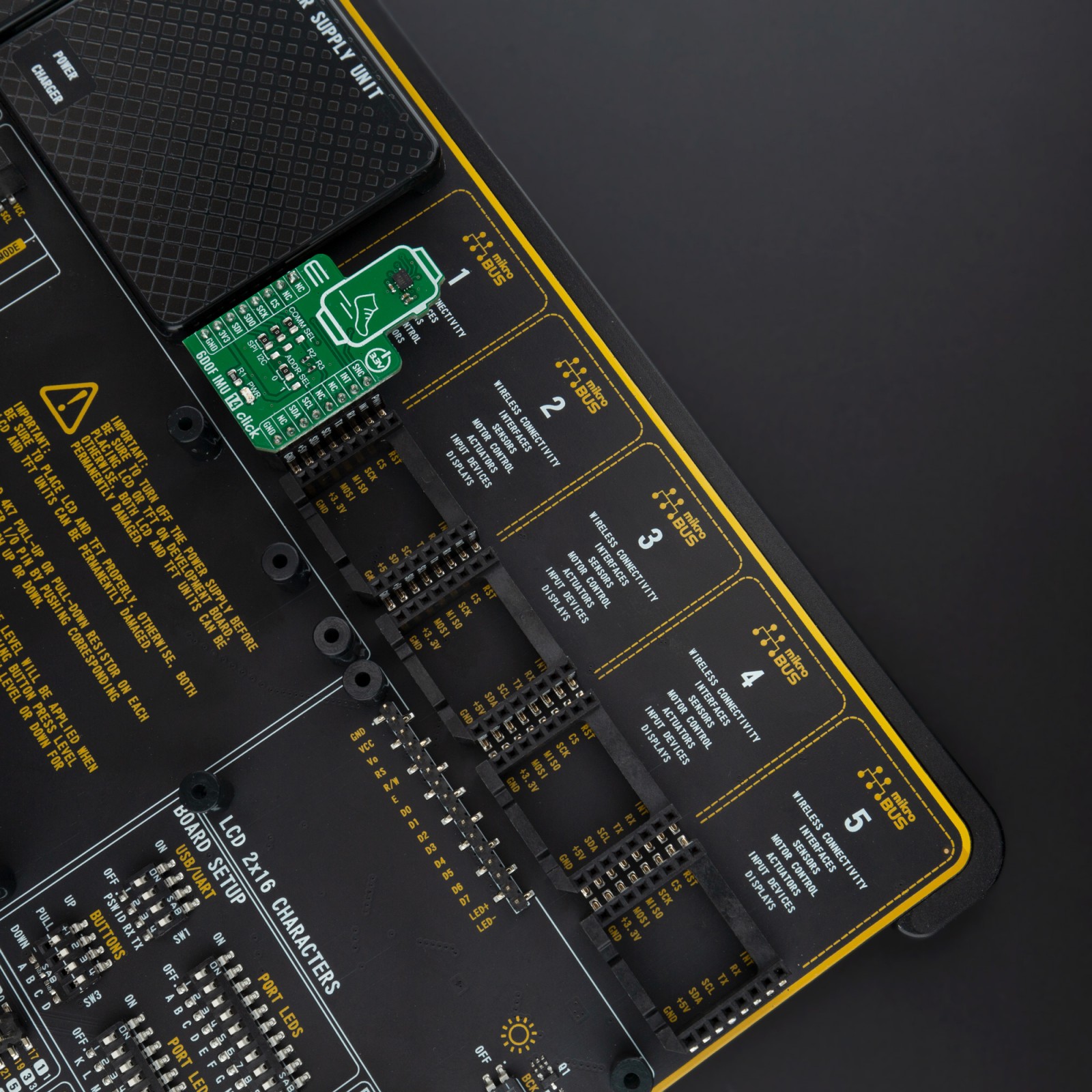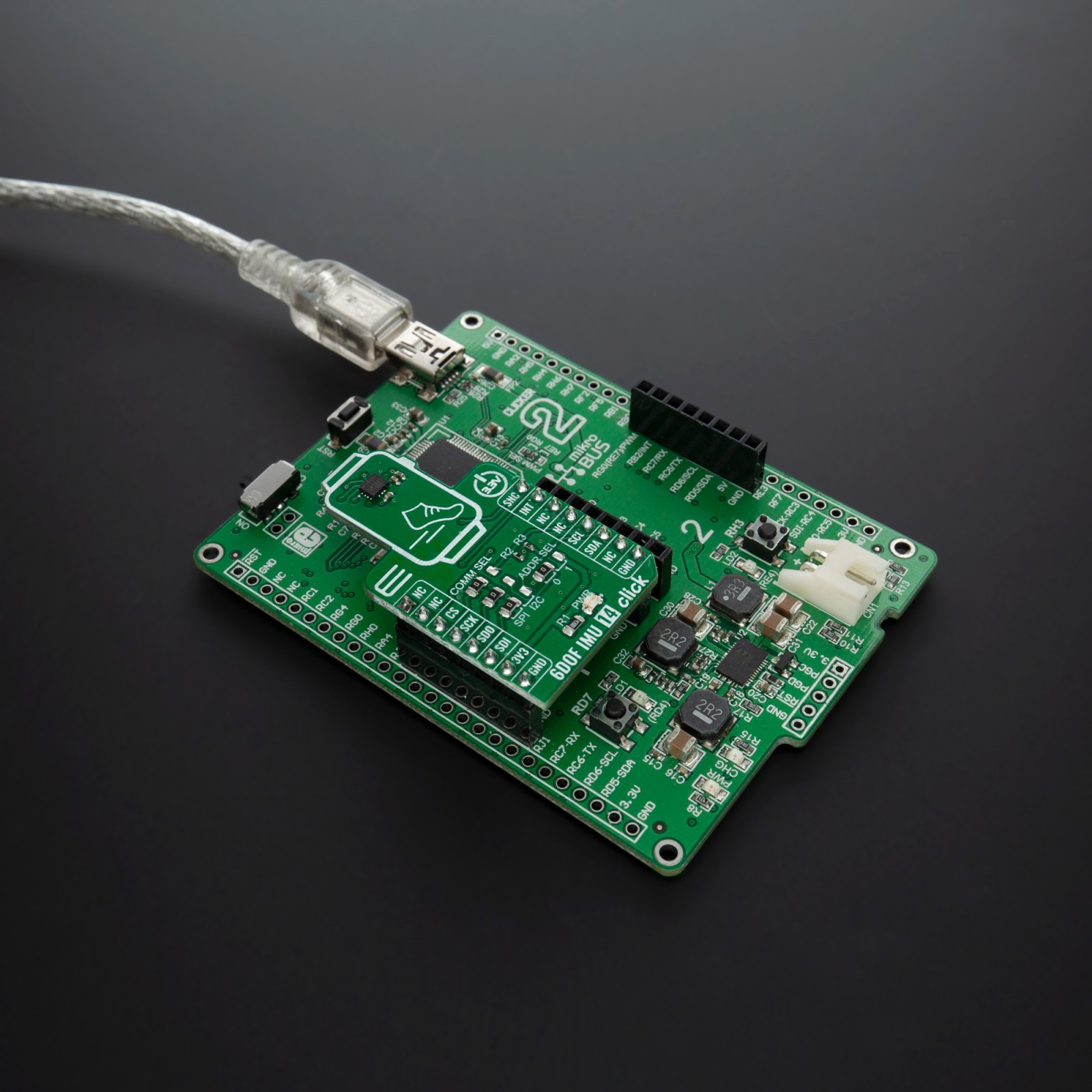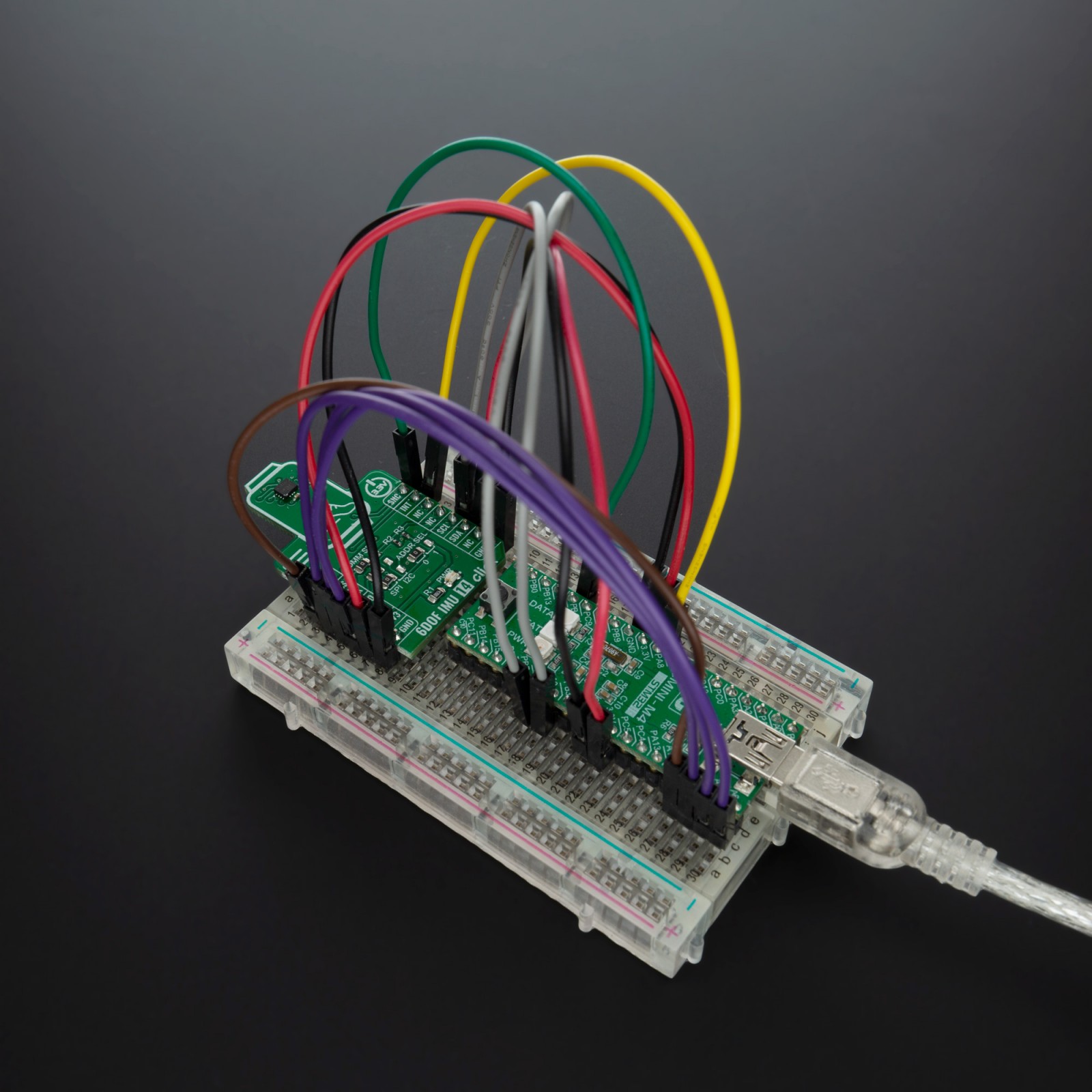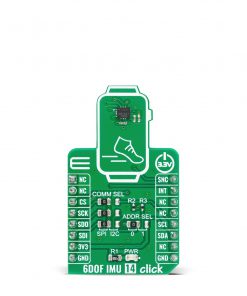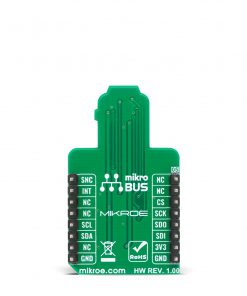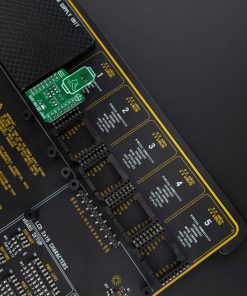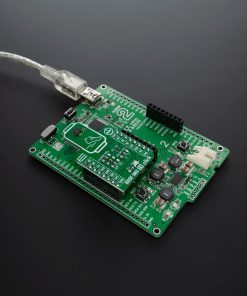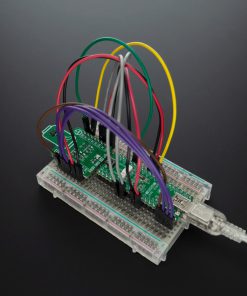6DOF IMU 14 Click
R555.00 ex. VAT
6DOF IMU 14 Click is a compact add-on board that contains a 6-axis MEMS motion tracking device combining a 3-axis gyroscope and a 3-axis accelerometer. This board features the ICM-42688-P, high precision 6-axis MEMS motion tracking device, from TDK InvenSense. It has a configurable host interface that supports both I2C and SPI serial communication, features a 2 kB FIFO and 2 programmable interrupts with ultra low-power Wake-on-Motion support to minimize system power consumption. This Click board™ is an excellent choice for applications like gesture recognition, activity classification, and pedometer, along with programmable digital filters, and an embedded temperature sensor.
6DOF IMU 14 Click is supported by a mikroSDK compliant library, which includes functions that simplify software development. This Click board™ comes as a fully tested product, ready to be used on a system equipped with the mikroBUS™ socket.
NOTE: Due to the current component shortage on the electronic market lead time and pricing for this product can vary
Stock: Lead-time applicable.
| 5+ | R527.25 |
| 10+ | R499.50 |
| 15+ | R471.75 |
| 20+ | R453.99 |


